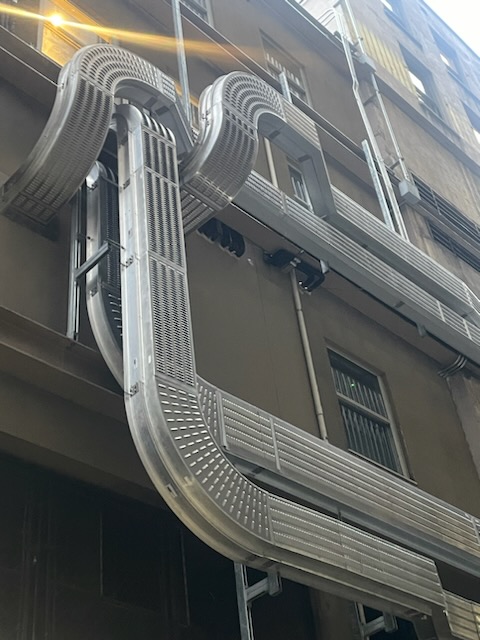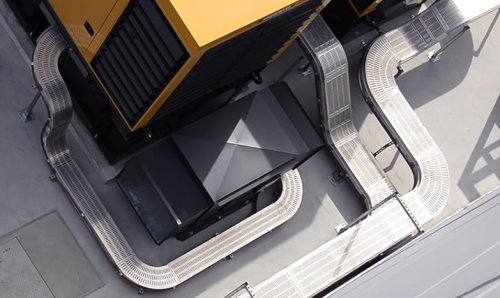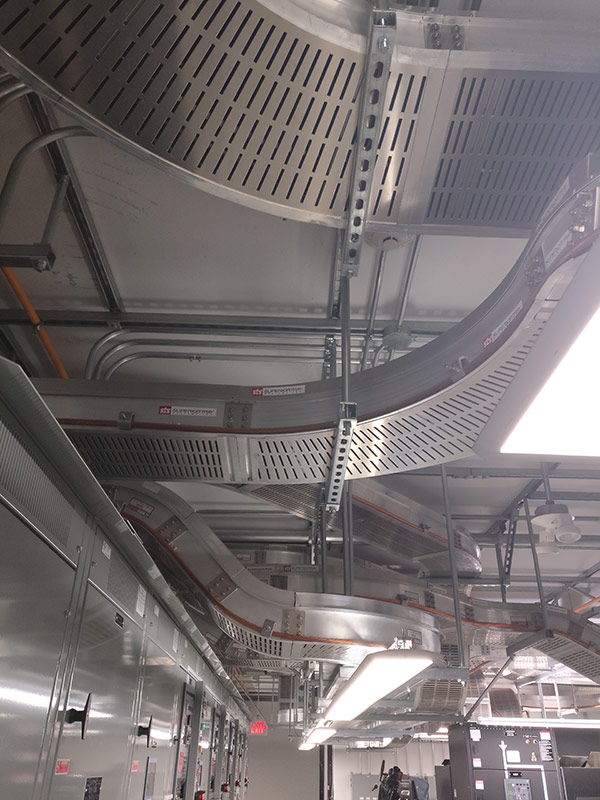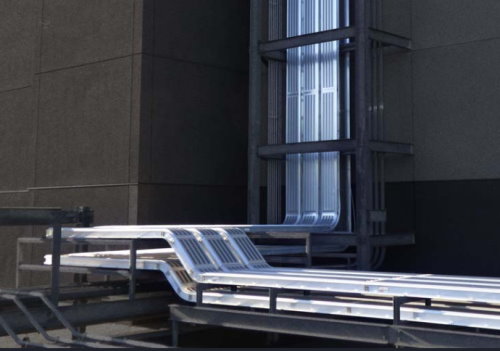Need Cable Bus?
"*" indicates required fields

The demand for reliable and efficient power distribution has made cable bus systems a popular choice for many industries. Whether for industrial facilities, transit systems or high-rise buildings, these systems offer more benefits than traditional methods like bus duct or conduit wiring.
Advanced cable bus systems like SuperiorBus are a cost-effective, durable and flexible solution to meet modern electrical infrastructure requirements. They allow cable movement, minimize voltage drop and ensure optimal performance through free air ampacities in cases where this is applicable.
According to a US Department of Energy study, inefficient power distribution can cause up to 30% energy loss in large scale industrial applications. This highlights the need for systems that optimize current flow, minimize thermal expansion and improve overall system efficiency.
Understanding where and why to use cable bus systems helps engineers, contractors and project managers looking for high performance power distribution solutions.
Cable Bus vs Bus Duct
- Better Heat Dissipation – Cable bus uses free air ampacities in cases where this applies to improve thermal performance, reduce heat buildup and increase system life.
- Flexibility in Installation – Unlike rigid bus duct, cable bus can be designed to fit complex layouts, around beams, conduits and structural obstacles.
- Higher Short Circuit Rating – The system can withstand high electrical fault currents without compromising safety or performance.
- Cost Savings – With minimal maintenance requirements and lower installation cost than bus duct, cable bus systems provide long term savings.
- Higher Reliability – The system’s insulated power cables and tray support design reduces the risk of failure and improves uptime.
Where to Use Cable Bus

Industrial and Manufacturing Facilities
Industrial environments require a power distribution system that can handle heavy loads, thermal expansion and high voltages without compromising reliability. Manufacturing facilities often have complex layouts with multiple equipment points that need a robust electrical supply.
Cable bus systems are suitable for these applications because they can handle high currents while keeping free air ampacities, when applicable, for better cooling. They are flexible enough to be installed around machinery, support beams and other structures.
Industrial sites are prone to dust accumulation which can lead to insulation degradation. The enclosure of a cable bus system protects against dust and environmental contaminants and ensures power delivery.
Power Generation Plants and Utility Installations
Power plants require high capacity electrical systems that can handle fluctuating loads and high voltage transmission. Cable bus systems excel in these environments due to their high short circuit rating that improves efficiency and prevents overheating.
In hydro, nuclear and fossil fuel power plants, cable bus systems are used to connect generators to transformers, switchgear and auxiliary equipment. They can accommodate expansion and cable movement which makes them better than bus duct systems that require more rigid support and additional maintenance.
Utility companies benefit from cable bus solutions because they provide secure and weather resistant power distribution. With minimal fittings and connections, these systems reduce failure points and improve overall utility infrastructure reliability.
Data Centers and High-Tech Facilities
Data centers require uninterrupted power to prevent system failures and downtime. Cable bus systems are increasingly used in these facilities because of easy installation, secure connections and high current capacity with minimal voltage drop.
The free air rating of cable bus allows for better heat dissipation, preventing insulation failure and reducing cooling costs in cases where this applies. The modular design of these systems makes them perfect for large scale layouts where reliability and performance is non-negotiable.
Transit Systems and Rail Infrastructure
Transit systems including MRT and subway networks rely on robust power distribution infrastructure to operate. Cable bus systems provide a flexible solution that can accommodate movement, vibration and structural changes in transit installations.
Bus duct systems often struggle in transit applications because of their rigid design. Cable bus systems allow for adaptable layouts, powering stations, control centers and trackside equipment. The secure enclosure and protective covers also prevent exposure to dust and environmental hazards.
High-Rise Buildings and Infrastructure Projects
Skyscrapers, hospitals, airports and universities require power distribution systems that can be installed in complex layouts while ensuring performance. Cable bus systems provide a space efficient solution with lower installation cost than conduit based wiring or bus duct systems.
Their flexible fittings and minimal hardware requirements make them easy to install in new construction projects. Besides, they can handle multiple phase configurations and expansion so they can perform long term in large scale buildings.
Water Treatment and Utility Facilities
Water treatment plants require power distribution systems that can withstand moisture, dust and fluctuating electrical loads. Cable bus systems provide an optimal solution by providing superior insulation, corrosion resistant enclosures and high electrical current capacity.
Bus duct may require additional protective coatings and maintenance, cable bus systems are designed with weather resistant materials reducing long term operational costs.
Why Engineers and Contractors Choose Cable Bus
Engineers prefer cable bus systems over traditional bus duct because of their flexibility, safety and reduced voltage drop. These systems provide a modular solution that can be adapted to various applications without reconfiguring extensively.
Plus, cable bus systems offer:
- Customizable Layouts – Designed to fit specific project requirements, straight and curved installations.
- Lower Maintenance Costs – Fewer failure points means less maintenance compared to bus duct or conduit based solutions.
- Secure and Reliable Connections – Insulated power cables and ventilated enclosures protect against short circuits and insulation degradation.
Future Trends in Power Distribution Systems
As electrical infrastructure evolves, the demand for cost effective and reliable power distribution solutions is growing. Cable bus systems will see more adoption across various industries due to their adaptability, efficiency and performance.
The market is trending towards smart power distribution, integrating digital monitoring and automation features. Future cable bus designs may include real-time voltage drop analysis, fault detection and thermal monitoring to improve reliability and predictive maintenance.
Sustainability is also driving the adoption of energy efficient power distribution systems. Cable bus systems fit modern energy conservation initiatives.
Choosing the Right Cable Bus System for Your Project
Choosing the right cable bus system depends on several factors including electrical load requirements, environmental conditions and layout complexity. Working with an experienced supplier ensures your system is engineered to meet project specifications.
At Harbor Energy Solutions, we provide fully engineered cable bus packages including physical layouts, electrical calculations and system performance analysis. Our SuperiorBus and HIGHBUS systems are designed to deliver maximum efficiency, safety and cost savings.
Cable bus systems is a reliable and cost effective alternative to bus duct and conduit based wiring. With their flexibility, higher current capacity and easy installation, they are suitable for industrial, commercial and infrastructure applications.
By including free air ampacities when applicable, secure conductor placement and optimized system design, cable bus solutions provide long term reliability and performance. Whether for power plants, data centers, transit systems or high rise buildings, cable bus has a proven solution for modern power distribution needs.




